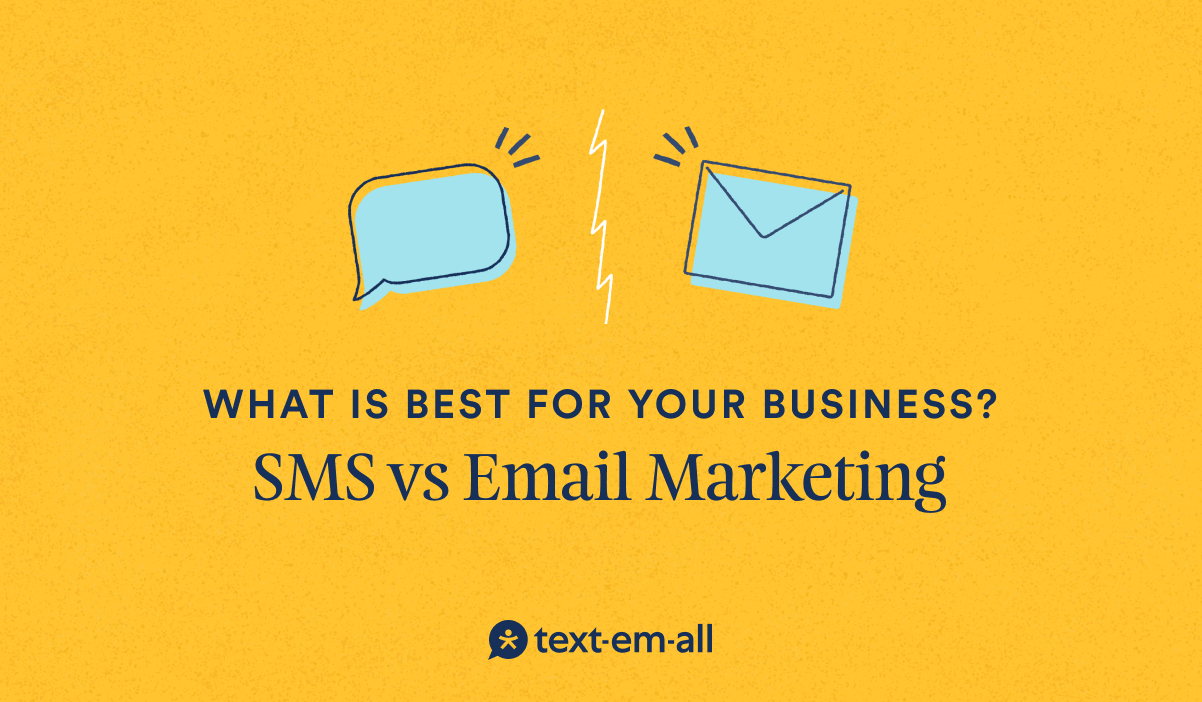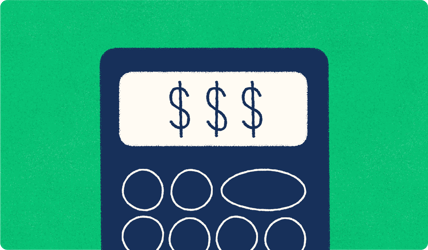
SMS and email are two of the most reliable digital marketing channels available today. Both have a long track record of helping businesses increase engagement, improve conversions, and reach customers directly.
So when it comes to planning your next campaign, which should you choose?
Let’s break down SMS vs email marketing by comparing their strengths, weaknesses, and ideal use cases. Whether you're focused on speed, personalization, or return on investment, you'll find clear guidance to help you decide which channel fits your goals.
What Is SMS Marketing?
SMS marketing is a communication strategy that uses text messages to share updates, promotions, and reminders with customers. These messages are sent directly to mobile phones and are often used to deliver short, timely information.
Businesses use SMS marketing to:
- Promote limited-time offers and discounts
- Announce product launches
- Confirm deliveries or appointments
- Send reminders about upcoming events
- Share important announcements or updates
Text messages offer a quick and personal way to reach people. Because texting is familiar and easy to use, it often leads to higher open and response rates compared to other channels. SMS also supports two-way communication, allowing customers a chance to reply and stay engaged in real time.
What Is Email Marketing?
As a form of digital marketing, email is used to communicate with both current and potential customers, and serves to:
- Welcome new customers
- Generate leads
- Promote products and services
- Build brand awareness and loyalty
- Collect customer feedback
Despite rumors that email marketing is outdated, it's far from obsolete. In fact, 81% of companies include it in their overall strategy. But that also means inboxes are crowded, and customers are starting to tune out.
SMS Marketing: Best for Instant Engagement and High Response Rates
SMS marketing is widely used across industries because it reaches people where they are: on their phones. Here are some of the key reasons SMS continues to drive strong results:
High open and response rates
Text messages are hard to ignore. While emails may sit unopened for hours or days, SMS messages are often viewed within minutes. Marketing texts see an average open rate of 98%, with response rates around 45%.
Instant reach and engagement
Text messages are delivered and often read almost instantly and rarely delayed by filters or folders. This makes SMS an ideal channel for time-sensitive updates or last-minute promotions.
Fast, focused content creation
With a short character limit—typically 160 characters—SMS helps marketers stay direct and concise. It’s a fast format to produce and easy for recipients to read quickly.
Personal, 1-to-1 communication
Texting creates a direct line between a business and its audience. With the right platform, you can customize messages and enable two-way replies, making it feel like a real conversation.
Where SMS Falls Short: Cost and Creative Limitations
While SMS offers speed and strong performance, it’s important to understand where it may fall short:
Limited character count
Most SMS messages must stay within 160 characters. This keeps things simple but may limit storytelling or complex offers.
Higher cost per message
Compared to email, SMS comes with a higher cost per send, typically $0.01 to $0.05 per message. However, campaigns often deliver strong returns, with some reports showing $71 in ROI for every $1 spent.
Compliance and consent requirements
SMS is a regulated channel. Businesses must follow rules set by the TCPA and CTIA, including getting clear opt-in consent, providing opt-out options, and sending messages only during approved hours.
Despite these limitations, SMS marketing remains one of the most effective ways to reach customers. More than half of consumers have made a purchase after receiving a promotional text, making it a powerful tool for businesses that need quick results.
Email Marketing: Best for Nurturing Relationships
What keeps email relevant is its strong return on investment, with average returns around $36 for every $1 spent. But beyond the numbers, email’s true strength lies in its ability to build and nurture customer relationships, often through the use of long-form content. Unlike one-time ads or fleeting social media posts, email provides a direct, owned channel where businesses can regularly show up with content that matters to their customers.
With deep personalization capabilities, marketers can customize messages based on behavior, preferences, and past activity. Plus, with built-in tracking tools, teams can monitor opens, clicks, and conversions to refine campaigns over time.
Where Email Misses the Mark: Time-Intensive and Easy to Ignore
That said, email marketing is not without its challenges. Open rates remain relatively low, averaging between 17% and 20%, which limits visibility and engagement. Spam filters can block messages altogether, even when campaigns follow best practices.
Email also requires more time and resources to execute effectively. Crafting high-quality content with strong visuals and clear calls to action takes effort. And in a crowded inbox, even well-written emails can get lost, as audiences may tune out simply because they’re overwhelmed by volume.
SMS vs Email: A side-by-side comparison
SMS and email each have their strengths, but they’re not mutually exclusive. In fact, many teams find the best results come from using both in tandem. Here’s what they have in common:
- Both support audience segmentation and targeting
- Both can be automated based on user behavior or campaign timing
- Both provide performance metrics like open, click, and response rates
- Both can be integrated into a multi-channel strategy to drive engagement and conversions.
Still, some key differences remain. Let's take a look:
|
SMS Marketing |
Email Marketing |
|
|
Delivery Method |
Text messages to mobile phones |
Emails to email addresses |
|
Content Length |
Limited to 160 characters (Platforms like Text-Em-All allow up to 1,600 characters) |
Allows for longer, detailed content |
|
Engagement Rates |
Higher open and response rates |
Lower open and response rates |
|
Delivery Speed |
Almost instant |
Can take longer, affected by server delays |
|
Cost |
More expensive per message due to carrier fees |
Generally cheaper, especially for high-volume sending |
|
Personalization |
Limited personalization due to character constraints |
Greater scope for personalization and customization |
|
Visuals and Design |
Mostly text-based, limited visuals (emojis or MMS for images) |
Rich media including images, videos, and interactive elements |
|
Regulatory Compliance |
Strict regulations (e.g., TCPA in the US) |
Regulated but with different rules (e.g., CAN-SPAM Act, GDPR) |
|
Permission-Based |
Requires opt-in |
Requires opt-in |
Best Use Cases for SMS vs Email
Knowing when to use SMS vs email often comes down to urgency, content depth, and audience behavior. Below are examples of when each channel tends to perform best.
Use SMS for:
- Time-sensitive updates (e.g., flash sales or last-minute changes)
- Promotions and limited-time offers
- Appointment or event reminders
- Quick confirmations or transactional messages
- Two-way communication with customers or teams
Text messaging is especially effective when timing and visibility are critical. Its high open and response rates make it ideal for immediate attention and real-time action.
Use Email for:
- Recurring newsletters or content-rich updates
- Detailed product announcements and launch plans
- Educational content such as guides or tutorials
- Campaigns with rich visuals or multiple links
Enhance Your SMS Game with Text-Em-All
There’s no one-size-fits-all answer when comparing SMS marketing vs email marketing. Each channel brings unique strengths to the table, and the most effective strategies often combine both.
Use SMS when messages need to be seen and acted on immediately. Use email when depth, design, or detail matters most.
Together, they can help build stronger customer relationships and drive results across every stage of the journey.
Text-Em-All makes it simple to send personalized, permission-based text messages that get noticed. Whether you're launching a campaign or sending time-sensitive alerts, our platform helps you connect quickly and responsibly.
Explore SMS Marketing with Text-Em-All













